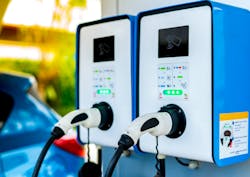Montana's Charging Station Installation Plan
Montana is set to receive $43 million in federal funds to roll out their electric vehicle (EV) charging station program, thanks to funding from the Federal Highway Administration.
The Montana Department of Environmental Quality (DEQ) and the Montana Department of Transportation (MDT) submitted the plan for the National Electric Vehicle Infrastructure Formula (NEVI) Program to fund infrastructure for major highways or “alternative fuel corridors,” which includes Interstate 15, Interstate 90, Interstate 94, and making U.S. Highway 2 and U.S. Highway 93 their priorities.
“We anticipate there will be more electric vehicles driving on Montana’s roads in the near future,” Rob Stapley of MDT said during a July webinar.
The plans should be approved by September with details being decided in the winter.
The EV charging stations will be required to provide 150 kilowatts to a single vehicle along with universal Combined Charging Systems (CCS), a standard for charging electric vehicles. The plan also requires that stations must be within one mile of amenities like restrooms and restaurants that will be available for drivers to use while their vehicles are charging.
Most of the current charging stations in Montana exist on Interstates 90 and 15 and Highway 93, but there are no stations in the central and northeastern regions of the state.
“The focus is on locations that are hubs,” said Kyla Maki, a DEQ energy resource professional. “Those are defined as an intersection of at least two major routes and gateway communities near national parks or other recreation areas.”
According to the plan, Montana’s phased approach will address larger charging gaps in the first two years, with stations spaced no more than 100 miles apart, eventually target 50-mile spacing in the final years, citing Montana’s low population density and slow EV adoption rate.
In the first year, Montana will focus on filling large charging gaps with stations along Interstates 15, 90 and 94 with officials adding at least 10 new locations, according to the plan.
U.S. Highway 93 and U.S. Highway 2 will be prioritized in years two through three, with Glacier National Park and other tourism destinations taking precedence.
In January 2022, there were just under 2,000 EV’s registered in Montana, Maki noted. Officials estimate there will be 30,000 Montana residents driving EV’s while key corridor routes will see 100,000 visitors by 2030.
Priority communities include the eastern and central regions of the state along with Livingston, Three Forks and Superior in western Montana.
Construction is expected to begin in 2023.
“Montana has developed a plan that’s put us on a path to an accelerated and equitable option,” DEQ Director Sonya Nowakwoski said. “It reduces transportation-related emissions and positions the state to be part of electrification efforts across the nation.”
---------------------------------------------
Source: Flatheadbeacon.com
